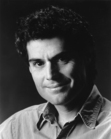Michael Shapiro's Blog, page 3
December 7, 2021
Sierra magazine: Gas leaf blowers are shrill. They pollute. Does it have to be this way?
As a teenager, I awoke every Friday morning at 7am to the horrific sound of our next-door neighbor’s leaf blowers, robbing me of those last precious moments of sleep before school started. I’ve long despised these unnecessary machines for their 100-plus-decibel noise that can trigger migraines; more recently I learned about the horrific environmental toll.
In a 2021 story for Sierra magazine, I reported: “The two-stroke engine employed by leaf blowers combines gas and oil to give the machine more power. This makes it light enough to carry, but two-strokes spit out as much as a third of this fuel mix as unburned aerosol. Operating a commercial leaf blower for just one hour emits smog-forming pollution comparable to driving a new passenger car about 1,100 miles, roughly the distance from Los Angeles to Denver, more than 15 hours of driving. That fact comes from the California Air Resources Board.”

Electric blowers are an alternative to horribly polluting gas machines. Another alternative: a rake.
I followed that up with a 2022 story for which I interviewed James Fallows, who as a young man was the lead speechwriter for President Jimmy Carter and now writes frequently for The Atlantic. Fallows led the drive to ban gas leaf blowers in Washington DC, which went into effect at the beginning of 2022. He told me: “It’s been a dramatic change.” Since January, he says, he’s heard the roar of gas leaf blowers just a “handful” of times. “You can hear the silence. What had been an unnecessary and almost omnipresent intrusion in people’s lives is not there anymore.”
Click here to read the 2022 story with Fallows’ comments on Sierra’s site.
Click here to read my initial Sierra story on leaf blowers, which discusses the implications of California’s 2024 ban on the sale – but not the use – of gas leaf blowers.
February 5, 2021
National Geographic, December 2020: In remote Nepal, new roads bring opportunity and perils
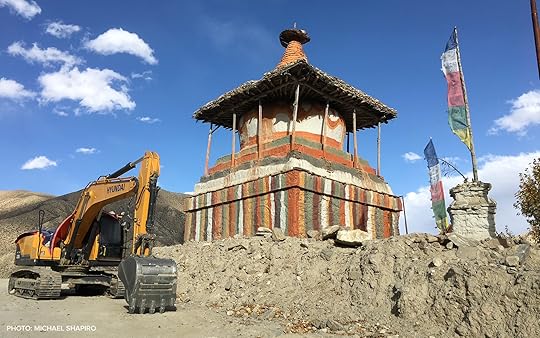
In October, 2018, my wife and I joined a group of trekkers led by Jamling Tenzing Norgay, the son of Tenzing Norgay, who in 1953 was the first person (along with Ed Hillary) to reach the top of Mount Everest. For our trek in the Kingdom of Mustang, which borders Tibet, we had to alter our route to avoid a new and busy roadway along the trekking route. Even so, our trail intersected with a new highway that was being built. Hearing the bulldozer after pristine days of natural sounds and quiet nights was shattering.
As I write in this story for National Geographic: “Change is coming quickly to Mustang, as it is throughout Nepal. The country has embarked on a fast-paced road-building program that’s transforming the landscape as well as the lives of residents and the experiences of travelers. While some visitors bemoan the expansion of roads into what they view as pristine regions, many Nepalis living in remote settlements welcome easier access to cities and opportunities to enhance their economic prospects.”
Jamling told me during our trek through the Nepali Kingdom of Mustang: “Local people have the right to improve, the right to do better in life. Who are we to stop people from having their own vehicle at their doorstep? We have it; they want that.” Yet he is keenly aware of what’s disappearing, for locals and visitors: “The moment you have cars going by, the whole charm of a trek is lost,” said Norgay. That’s significant for the thousands of Nepalis who depend on tourism for their livelihood.
At a monastery in the walled city, I asked a maroon-robed, English-speaking monk what he thought of the road that will connect Lo Manthang to the outside world. “Some things bad, but some good,” he said. Then he told me about a woman who had a difficult childbirth, which resulted in her infant’s death. If the road had been finished, he said, perhaps she could have reached a hospital in time to save the baby.
As one learns traveling the globe, there are no easy answers.
National Geographic, November 2020: How the mystique of Wales gave strength to a legendary writer
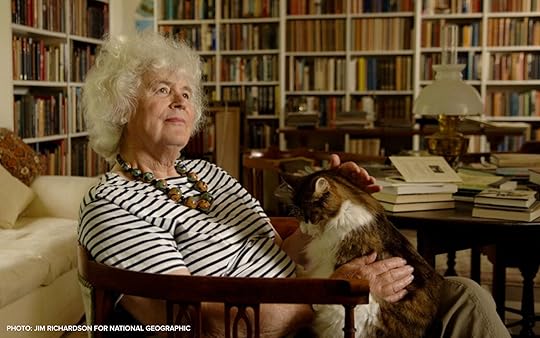
My editors at National Geographic made it clear to me that they did not want a personal reminiscence about Jan Morris after she died on November 20, 2020. They wanted a piece about Jan’s deep and abiding connection to her adopted home, Wales. She was half Welsh and half English but she consciously chose Wales, the place to which she always returns after her journeys through the Middle East, to the slopes of the Everest base camp, to Venice, to Sydney, to Hong Kong and so many other places.
So the National Geographic story is not about our personal connection. Yet Jan Morris has a tremendous effect on my life, first as a mentor, then as a friend. I had the good fortune to meet her in 1992 at the inaugural Book Passage Travel Writers Conference. A decade later she instantly and graciously accepted my invitation to be interviewed for my book, A Sense of Place, a collection of conversations with 18 of the world’s top travel writers. I’m not sure I could have done the book without her participation, as it would have been incomplete.
Taking slow trains to Wales in 2003 for the interview felt like making a pilgrimage. Jan and her partner Elizabeth could not have been more welcoming, putting on a pot of tea as promised and taking me to the mountain lodge where the Everest climbers trained in 1953. Other assignments, including a 2006 cover story for National Geographic Traveler, brought me back to Wales. Jan and Elizabeth and their Norwegian Forest cat, Ibsen, were always there to welcome me.
When I returned with my wife in 2012, we celebrated our first anniversary with Jan and Elizabeth at Portmeirion, a whimsical Italianate village near their home in northwest Wales. I last heard from Jan after writing to her on the occasion of her 92nd birthday:
“Michael! 1000 thanks for remembering me and my birthday and lots more for the pleasures of what is now becoming a long friendship! No, we didn’t lunch at Portmeirion, but with Twm [Jan’s son] and his girl at Trefan, and a lovely lunch they gave us. I envy you your Nepal trek. I don’t believe I ever met Jamling, but pay him my respects anyway in lieu of his magnificent dad – and while I’m about it, pay my fond respects to your own magnificent Mum!
Elizabeth sends her love, and so of course, dear Michael, does your most affectionate Jan.”
Kauai Garden Island, Jan. 2, 2020: Surviving a Rogue Wave
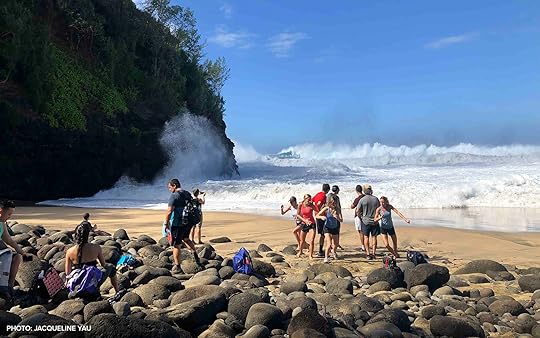
As a whitewater raft guide for 30 years, I’m very familiar with the power of moving water, and I have a tremendous respect for it. On Dec. 30, 2019, my wife and I, while hiking the Kalalau trail along Kauai’s Napali Coast, stopped for lunch on the rocks above Hanakapi‘ai beach. We were probably 40 feet above the waterline. As it turned out, that was not far enough to evade a sneaker wave.
Here’s how my story about the life-threatening incident began:
“Get ready to run,” I said to my wife as we watched a muscular swell gain momentum shortly after noon Monday at Hanakapi‘ai Beach. A second later the water was up to our ankles, then instantly above our knees, higher than our waist. Then we were under water, entirely submerged…”
If you click through to the story, you can see photos taken as the wave approached. My wife was just taking photos of a family on the beach seconds before the wave came in. Even more remarkable, somehow my wife’s phone took accidental video of the incident, And that’s on the story page is well, click below to see it all.
Essay: A Month of Sundays, The Bold Italic, June 11, 2020
This essay began forming as I took long walks in April 2000, after being diagnosed with Covid the month before. I focused on the silver linings of the pandemic and how this terrible wave of disease might lead to a more humane future. Here’s an excerpt:
This month of Sundays seems to be coming to an end. Restaurants, bars, stores, and parks are reopening, with restrictions, and the roads are getting busy again. I’m happy since that means officials feel the virus is somewhat contained and it’s good for our economy. But I already feel nostalgia for this unexpected respite.
There’s a relatively new word in the English language, “anemoia,” that means longing for a time through which one never lived — but this is different. What I’m feeling is nostalgia for a time that’s not yet over, a time through which we’re still living, and I know of no word for that. Maybe we could call it “prestalgia.” This is similar to a sensation I have on a fantastic trip: I start missing Nepal a night or two before flying out of Kathmandu.
Perhaps the closest I can come to describing this is the Welsh word hiraeth, an ineffable yearning. “We’re always longing for something, but we’re not sure if it’s an ideal past or a better future,” the great Welsh author Jan Morris told me during an interview for National Geographic Traveler magazine. Perhaps it’s this “perennial vision of a golden age,” Morris writes in The Matter of Wales, “an age at once lost and still to come.”
As tragic and life-altering as this pandemic has been, it could contain the seeds of a brighter future, an era when we make more time for one another and our communities, take better care of our home planet, and remember what a gift it is to be able to simply breathe freely.
A time when we embrace a little bit of Sunday every single day.
The Press Democrat, Feb. 20, 2020: Sarah McLachlan reflects on making music and giving back

I first heard Sarah McLachlan’s voice in 1990. I was teaching at an outdoor education school in the Santa Cruz Mountains and my housemate had a cassette tape of her first album. It was love at first blush. Her work was raw then; it wasn’t until four years later, when she released Fumbling Toward Ecstasy, that she became a global sensation.
I’ve long admired Sarah for her integrity, openness and sincerity in an industry that makes it hard to maintain those qualities. But most of all I admire her for her work. Her songs are meaningful and transporting, and ultimately uplifting.
She’s also the founder and principal fundraiser of the Vancouver-based Sarah McLachlan School of Music, which provides music instruction and mentoring for about 1,000 at-risk youth. “I wanted to give back in some way to show my gratitude to the universe,” McLachlan said.
But perhaps the effort she’s most identified with is the women-centric music festival she founded that bucked industry norms. McLachlan launched the Lilith Fair in 1997 after being told by a promoter that tickets wouldn’t sell with two women on the same bill.
The Lilith concerts raised millions of dollars for women’s shelters and other women-focused support agencies. McLachlan sometimes hand-delivered checks to shelters of up to $30,000, often the largest donation they’d ever received. “They would say, ‘This is going to keep women away from their abusive husbands or off the street. This is going to give them a second chance.’ Just knowing I was part of that was incredibly gratifying.”
Sarah was kind enough to meet me backstage before the show and hugged me like an old friend.
Sierra magazine, June 2020: The Case Against Cruising. Proposed legislation seeks to clean up an environmental pariah

The Covid-19 pandemic has shown how risky it is for people to go cruising. But even after the pandemic eases, there are reasons to reconsider cruising due to the damage ships do to oceans and their inhabitants, including colliding with whales and dolphins.
One of the strongest voices making the case against cruising is U.S. Representative Jackie Speier (D-Calif.). She sponsored a bill, dubbed the CRUISE Integrity Act, to reform cruise ship operations. It calls for restrictions on the dumping of trash, untreated waste, and oily bilge water into the oceans. It would also require cruise lines to submit plans to drastically reduce emissions of carbon, methane, and nitrogen oxides and reduce the use of heavy fuels that exacerbate climate change.
“Most cruise lines are little more than foreign polluters that fail to protect their workers and passengers,” Speier said in announcing the bill. As COVID-19 spread worldwide last winter, cruises continued to ply the oceans.
“People on a large ship, all together—you couldn’t ask for a better incubator for infection,” warned top US infectious diseases official Dr. Anthony Fauci. In early February 2020, the Diamond Princess had more than 700 coronavirus infections—more than any country at the time except China. Yet voyages continued departing into March, spreading the disease, while cruise lines portrayed the catastrophe on the Diamond Princess as an isolated incident.
“We all watched in horror as conditions slowly deteriorated for those trapped on cruise ships,” Speier said, noting that one of her constituents died after a voyage on the Coral Princess, another ship stricken by the coronavirus. “Passengers were caught in a nightmare, sick and struggling to get medical care or find a way home. The heartbreaking truth is that much of this suffering was likely avoidable. Had cruise companies acted swiftly and cautiously and prioritized human life over profits, lives might have been saved.”
The Press Democrat, July 1, 2020: ‘California Rocks’ at Sonoma Valley Museum of Art shows the heyday of rock ’n’ roll
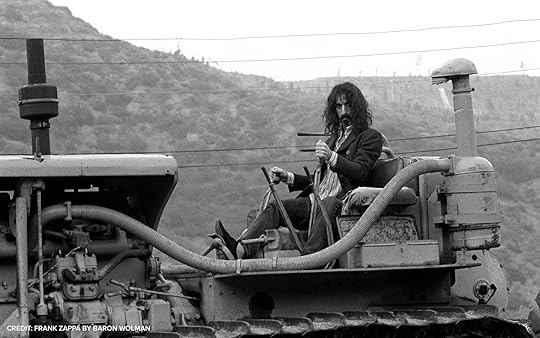
How could anyone possibly capture the intensity, passion and emotion of rock and roll in a photo? It seems impossible, but talented photographers catch moments that speak volumes. For a story about an exhibition at the Sonoma Valley Museum of Art, I interviewed some of these legends. Some of these photographers have been working with rock stars since the 1960s, getting up close and personal with Hendrix, Janis, Zappa, Stevie, Jerry, Carlos, and other greats who can be identified with a single name.
There are images of Garcia and Santana in a candid moment at Bill Graham’s home in Mill Valley, a defiant Patti Smith at The Fillmore and Southern California’s Jackson Browne during his “Running on Empty” stadium tour.
The late Jim Marshall’s photo captured the Beatles’ final show, at Candlestick Park in 1966, and his black-and-white shot nails Johnny Cash at Folsom State Prison. Marshall also has an unlikely image in the exhibition of Jimi Hendrix at a drum set in a Sgt. Pepper-like jacket, a wistful look on his face.
Baron Wolman, who in 1967 became the founding photo editor at Rolling Stone, said he appreciates the show’s focus on California, which he called “a wonderful breeding ground for a new version of rock and roll.” Wolman photographed legends such as Joplin with her band, Big Brother and the Holding Company. “There was change in the air,” he said, “and the music was part of the change.”
Spark Your Creativity
Learn more here: https://redwoodwriters.org/creative-spark-workshop
Deepening the Creative Flow with Pico Iyer
Learn more and register here: https://myfivethings.com/class/deepening-the-creative-flow/
Michael Shapiro's Blog
- Michael Shapiro's profile
- 3 followers


